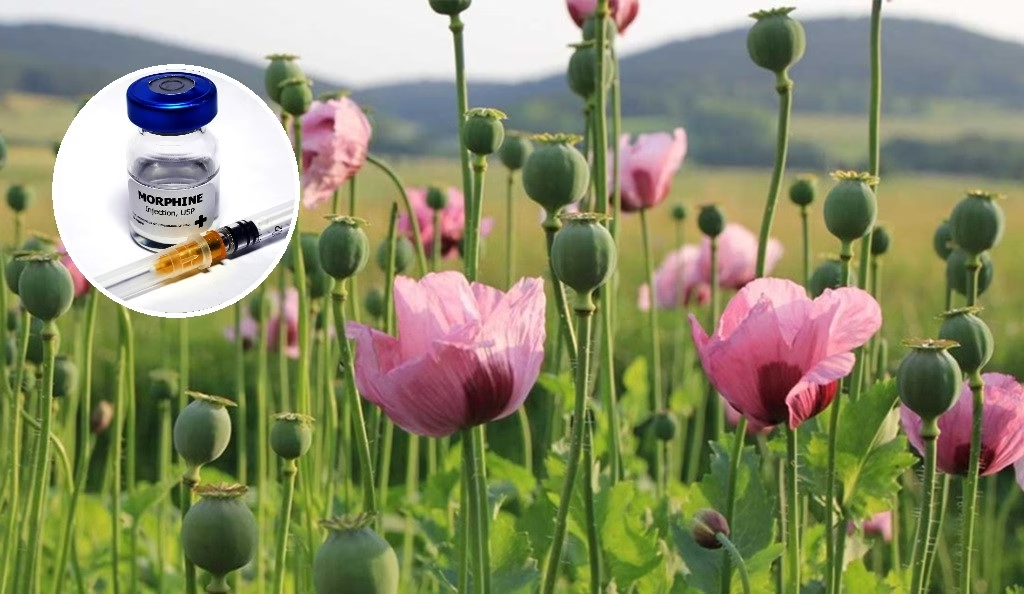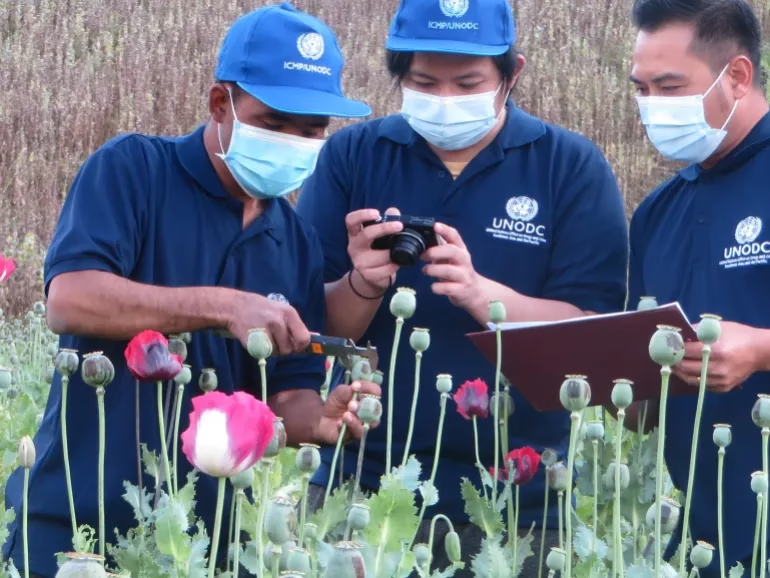CHIANG RAI – In the misty highlands of northern Thailand, where the scars of past opium wars linger like forgotten ghosts, a bold proposal is stirring debate. Deputy Public Health Minister Worachot Sukhonkhachon has floated the idea of legalizing commercial opium poppy cultivation strictly for medicinal purposes.
It’s a notion that harks back to the region’s turbulent history while eyeing a future of self-sufficiency in plant-based pharmaceuticals – and a much-needed economic boost for struggling hill tribe farmers.
At a forum hosted by the Department of Thai Traditional and Alternative Medicine in Bangkok, Mr Worachot outlined a clear path. He said regulated opium growing could raise Thailand’s capacity in plant-based medicine and help remote communities at the same time.
The ministry wants to boost the economy through holistic care, wellness tourism, and herbal product exports, all under strict rules and monitoring. Replacing low-value crops with poppies could lift incomes in hard-to-reach areas.
The plan would rely on tight government control, licensed plots, and secure supply chains.
Cutting Import Costs With Home-Grown Morphine
Thailand buys most medical opioids from abroad, which strains budgets that could support local research. Dr Mingkwan Suphannaphong, managing director of the Government Pharmaceutical Organisation (GPO), set out the case in plain terms. Opium-based medicines are widely used for acute and chronic pain, costing around 300 million baht each year, she said.
The GPO, working with the Narcotics Suppression Bureau, has already produced morphine at lab scale using seized plant material and trial plots under NSB oversight. A semi-industrial facility in Rangsit, Pathum Thani, backed by 36 million baht, is ready to support pilot production. Controlled commercial cultivation could follow, Dr Mingkwan said, but only with very strict safeguards to prevent diversion. bangkokpost.com
To grasp the stakes, look back to the 20th century, when Chiang Rai and Chiang Mai sat at the heart of the Golden Triangle. This border zone linking Thailand, Myanmar, and Laos produced much of the world’s heroin from the 1950s onward.
Ethnic groups who fled China’s civil war brought opium poppies to the northern highlands, and many hill tribes, including Hmong, Akha, Lahu, Lisu, and Yao, adopted the crop for cash income in poor, steep terrain. jied.lse.ac.uk green-trails.com
Fields spread across places like Doi Mae Salong and Doi Chiang Dao during the years of insurgency and weak state presence. By the 1960s, Thailand ranked among the major producers, feeding addiction and drawing international criticism.
Opium was not always reviled. For generations, it had a place in folk medicine, easing severe pain and stomach illness. Laws changed that status. A ban on cultivation came in 1958, and stronger enforcement followed in the 1980s, though the terrain and social ties slowed progress. unodc.org green-trails.com
The Royal Project And A Sharp Decline of Opium
A turning point began in 1969, when King Bhumibol Adulyadej visited Chiang Rai and learned that some poppy growers could match their earnings with coffee. That insight led to the Royal Project Foundation, which backed crop substitution with coffee, tea, fruit, and vegetables. Roads, schools, clinics, and access to citizenship followed, bringing communities into the national fold.
The results were dramatic. By 2015, opium output had fallen by 97 percent from the 1980s peak, dropping from 23 tonnes to tiny amounts. The United Nations praised Thailand’s approach as a model for alternative development. Today, tea estates in Mae Salong and coffee farms in Doi Tung attract visitors instead of traffickers. fukuoka.thaiembassy.org
The Hall of Opium Museum in Chiang Saen traces the crop’s long story, from ancient uses to modern heroin labs. For many locals, these memories are a lived experience. Elders describe scoring poppy pods at dawn and trading resin for basic goods, and at times for weapons. sawadiscovery.com green-trails.com
Any legal revival must fit global rules. The United Nations Office on Drugs and Crime supports licensed cultivation for medical and scientific use, even as it condemns illegal farming. The 1961 Single Convention permits controlled production under quotas, and countries like India operate under this framework, with early lancing for high-morphine yields and lower grades for excise use. news.un.org unodc.org
Weighing Risks And Rewards
UNODC case studies highlight safer models. Turkey and several European states use the poppy straw method, which extracts alkaloids from dried capsules without collecting raw opium, reducing the risk of abuse.
This approach matches Thailand’s cautious trials, including approvals at the International Narcotics Control College in Chiang Saen in 2023 for medicinal opium and psilocybin research. Strong controls, poverty reduction, and ongoing research are central to avoiding a return to illicit trade. unodc.org
Critics, including anti-drug groups, warn of backsliding. They argue that progress came from empowerment and better livelihoods, not replanting poppies. Supporters counter that secure, licensed plots, with all harvests channelled to GPO facilities, can keep the system safe. Estimated farmer earnings of 50,000 to 100,000 baht per rai each year could compete with illegal gains, without the legal risk.
In Chiang Rai, where coffee and tea now thrive, views are mixed. Some elders in Doi Tung say medical use fits older traditions, so long as security holds. Younger farmers see a chance to supply legal morphine for pain relief at home and abroad, similar to the path taken with cannabis policy.
Done well, Thailand could build a trusted supply of medical opiates, cut import bills, and support highland communities. Done poorly, the country could reopen old wounds.
For now, the focus is clear. Tight licensing, traceable supply chains, fair farmer contracts, and independent audits will decide the outcome. The hills remember the cost of past mistakes. The hope is a different story this time, rooted in control, transparency, and public health.














